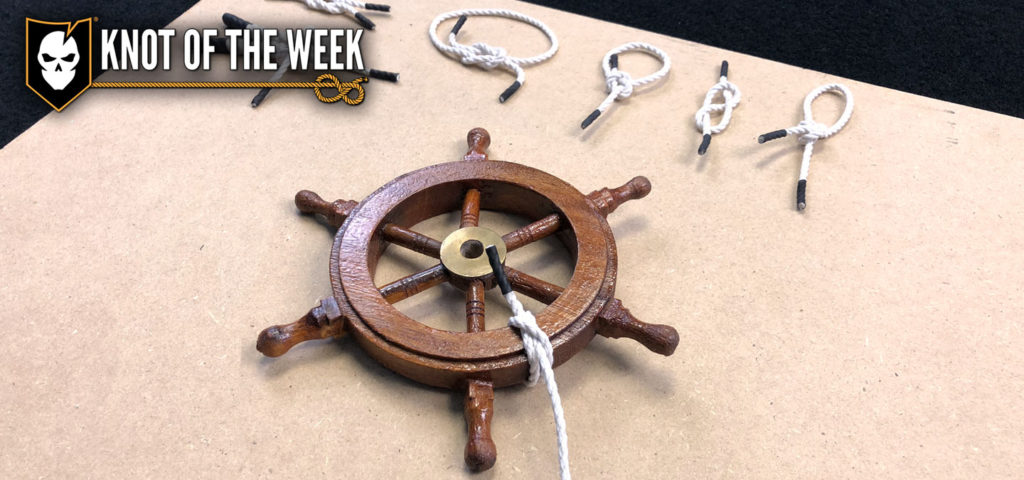In this Knot of the Week, Bryan demonstrates the Clove Hitch, which is most often used to secure a line to a post. One of the common uses for this knot in the past was tying up a horse when making a stop. He shows two methods of tying, one of which involves tying the hitch in the middle of a line.
In addition to tying the Clove Hitch, Bryan also offers a look at a new centerpiece for our DIY Knot Board Display, which we’ve dubbed the Janky Ship’s Wheel.
Clove Hitch » Hitches
(Strength: 4/Security: 2/Stability: 4/Difficulty: 3) See below for what these ratings mean.
While the Clove Hitch won’t bind, it can fail under heavy load, so you shouldn’t use it for any lifesaving applications like climbing. While many climbers utilize Clove Hitches for temporary tie-ins on anchors, they’re only temporary and should never be used to anchor into anything.
Ratings
Strength/Security/Stability/Difficulty
Each knot will be assigned a rating from 1-5 (1 representing the lowest score) based on the following four properties:
Strength – All knots will weaken the strength of a rope, however, there are knots that are stronger than others. The scale here will reflect how strong the rope remains with the specified knot.
Security – The security scale refers to how well the knot will stay tied, and resist coming loose under a normal load.
Stability – Stability refers to how easily the knot will come untied under an abnormal load (i.e. the knot being pulled in a direction it was not intended to) A lower score here represents instability.
Difficulty – The lower the number, the easier a knot is to tie.

